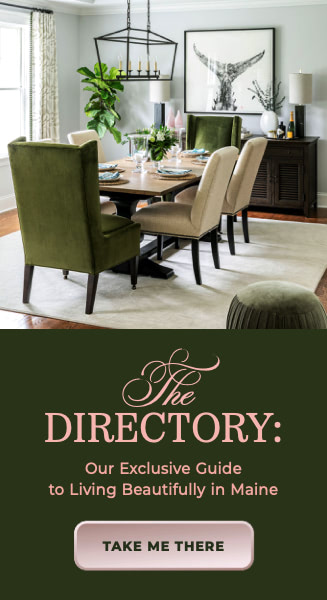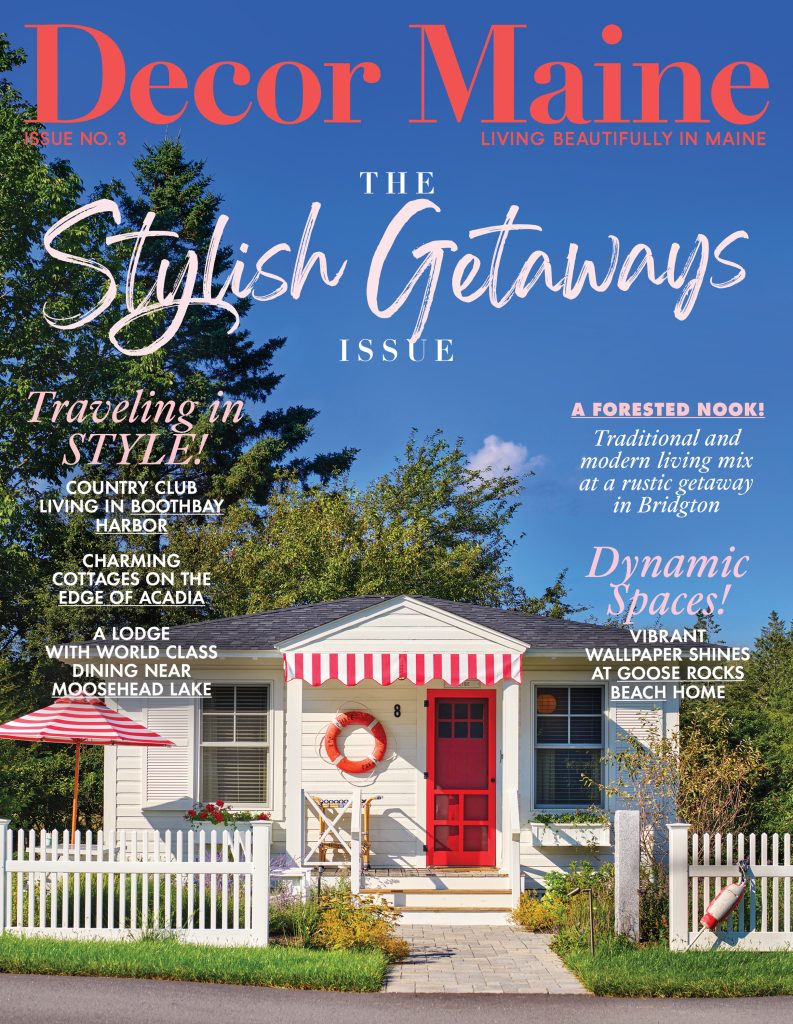I’m a writer. The tools of my craft are a pen, a notepad, a laptop on a table, but I live amid a myriad of makers who people the three-mile stretch of our road. At one end, Sarah builds a base camp for her timber frame house project. Next door, Carpenter’s Boat Shop apprentices build Monhegan Skiffs. Down the off-grid and gravel section of Old County, Angela and Kenneth Kortemeier run the Maine Coast Craft School, a woodland hub where makers gather for green woodworking using hand tools. Here, they rive and carve, shape and shave. They pare, gouge, bore, and embellish. They craft spoons and bowls, boxes and buckets, benches and wheelbarrows. Once, my husband took a class and came home with a Windsor chair. While the purpose of my hands is to write, I live among hands that seem to only want wood. Is it possible to dwell alongside makers and not want to become one?
When I take breaks from writing, I romp the road, where the voices of my characters often emerge. The left-right cadence of my footfall informs the rhythm of my prose. I let the lyricism of the landscape feed my imagination, gather metaphors I tuck away. It was on such a gambol—the morning air cool with damp, the crowns of hardwoods barely green—that I came upon a clutch of carvers sitting on stumps in the branch-filtered sun. Bent to their task, some sported flax shirts and suspenders and beards, while others wore wool skirts and knit hats, creating the scene of an illustrated folktale.
I waved. Our neighbor, their teacher, beckoned me to stop by. Between the edge of the road and that fine assembly, my brain relaxed. My body suddenly loosened and calmed. The shift I felt was ineffable.
There were sounds of swishing blades against sapwood—rhythmic, meditative—and the sweet scent of tree. Curled shavings tumbled to the ground. Only the teacher spoke, gently, a breeze. It was as if I had stepped through a portal, where, inside of it, the hand-to-tool, tool-to-wood connection, this triumph of three, had put the makers into a trance.
That day, I was humbled and haunted. Their practice seemed holy. I would come to learn I was right. Soon after, I’d begin whittling, collect wood curls solely for the simplicity of their beauty, learn to make brooms. I’d try for a butter spreader and experience the inside of what I had witnessed, that, as Stanley Kubrick once said, “The truth of a thing is in the feel of it.”
My first hands-on foray with woodcarving was during the first pandemic winter through the Foresta Seasonal Academy, an online series of learning pathways that foster ecological sensitives in humans through embodied practices, thinking through making. Our guest teacher, Swedish woodcarver Daniel Wester, got his start in wanting to express himself with his hands. He found that carving calmed his emotions. He tasked us to collect wood, a carving knife, and choose a place in the open air to sit and whittle. As I sliced my blade against a snake-shaped stick, my nerves, too, found stillness. I recalled that gathering of makers in a Maine wood. But now it was me—tool, and wood in hand—breathing inside that trance.
Next spring, I took a broom-making class with Kenneth. For five days, we stitched dense clumps of rush to a carved ash sapling, made whisks out of cordage and straw, riveted dustpans out of salvaged roof metal and moosewood. Shoulders dropped. Breath deepened. Time slowed.
Last winter, I took a workshop with Eric McIntyre at Village Handcraft in Wiscasset. Eric is one of those first magical makers I spied in the woods, who later became a friend. Stepping into his small storefront workshop on a side street flanking the Sheepscot River, I felt it, that same indomitable calm. Sunlight streamed through paned windows, shaping patches of gold on softly worn floors, the tools that lined his workbench, and his handmade goods that filled shelves. We sat in a circle. We learned about the tree species we’d use to conjure a piece of wood into a butter spreader. As the cold reigned outside, we warmed our bodies with movement and intent. As I carved, I imagined curved wood smoothing butter onto warm, salty bread. A revelation! How the sights and sounds of woodcarving can open the mind to non-present scents and tastes, sensory associations. I became still. I felt calm. I opened to merging sensations.
Like me, the butter spreader is a work-in-progress. Half-crafted, it resides in the freezer which keeps it “green,” until I recall again how to make is to be. Perhaps it’s more accurate to say that the butter spreader is a work-in-process, as I am now both a writer, and freshly akin to making. ▪

